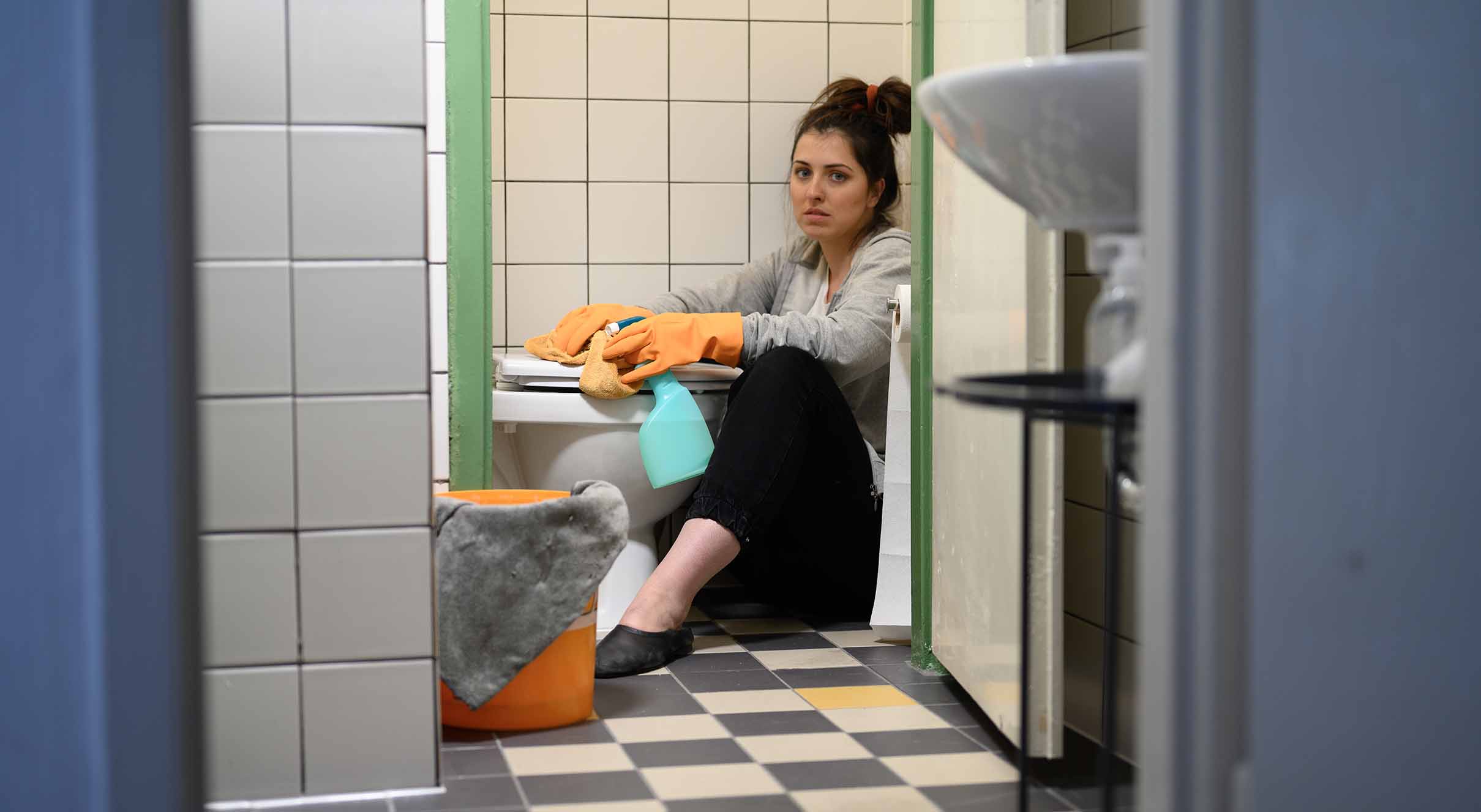

Gender stereotypes
Gender stereotypes are people`s ingrained notions that men and women have characteristics, abilities, roles and characteristics that are predetermined by their gender. Gender stereotype is something that can limit the development of all people`s natural talent and certain abilities. Gender stereotypes can limit the educational conditions and professional experience or life chances of men and women based on whether they are men or women. As gender stereotypes make women look weaker than men, they are the cause of many prejudices, they are behind bullying in schools or violence against women. An example of conversation at work could serve well to illustrate the impact of the spread of gender stereotypes - when colleagues talk to each other, they are said to be discussing; when colleagues talk to each other, they are said to be gossiping. Examples of other stereotypes are given below.
Examples of gender stereotypes:
- All girls should play with dolls and all boys should play with trucks.
- All boys should like blue and green, all girls shades of red and pink.
- All girls are better at reading and all boys are better at math.
- All girls should behave decently, all boys are expected to be naughty.
- All girls are less interested in technical subjects than all boys.
- All boys should play sports, all girls should do art.
- All boys and men prove their manhood by aggression.
- All non-aggressive boys are still being bullied.
- All girls should be slim and groomed to be attractive to men.
- All women who remain violent are weak.
- Not all women who don`t want children are completely fine.
- All assertive women are unattractive, domineering, not very feminine.
- All women are natural educators; all men are natural leaders.
- All men have to support their wives or partners, so women don`t have to be paid the same.
- All non-gentle women are lesbians.
- The real fulfillment of all women is caring for children and the household.
- All men who spend time with their families are less masculine, do not enjoy their jobs, or earn little.
- All men who don`t show aggression are probably gay.
- All women are too emotional to be good employees in some industries.
- All men are too impersonal and insensitive to take on tasks that women naturally do better.
Gender stereotypes are simplistic, unrealistic images of masculinity and femininity, idealized and expected patterns that accompany us in all areas of life. These are patterns that, on the basis of gender, justify the existence of characteristic features of women and men, knowledge of which can be expected and thus predetermine their behavior and actions.
In society, the appeal to women`s nature legitimized the inclusion of women in the private, family sphere, while the public sphere was reserved for men. The stereotype of a man - a breadwinner and a woman - a wife, a mother and a babysitter - has thus stabilized. Common characteristics of a man: rationality, activity, independence, assertiveness, physical strength, "men do not cry", aggression, man (father) as the head of the family. Common female characteristics: emotionality, passivity, independence, physical weakness, woman (mother) responsible for the atmosphere in the family, for raising children, for caring for the family.
The stereotypes of masculinity and femininity bind us, guard and show us and limit our ability to make more variable and flexible decisions and develop our personalities. These gender norms have been passed down from generation to generation, in the process of education and socialization, and their observance has been checked and punished.
GENDER MYTHS
The Myth of Beauty
In India, one of the poorest countries in the world, the poorest women receive 1,400 calories a day, which is 600 more than women in Western Europe on the Hilton diet. In the besieged Lodz ghetto in 1941, the Jews received a hungry ration of 500-1200 calories a day. At Treblinka, 900 calories were scientifically considered the minimum necessary to keep a person alive. In some clinics for weight reduction, where the so-called. Patients are treated for up to one calendar year, the food ration is the same
The myth of beauty is Naomi Wolf`s concept, which very accurately captures the enormous pressure to which girls and women (but increasingly also boys and men) are subjected. The desire to like is inherent in all people. However, the definition of beauty varies depending on culture or historical times. The problem arises when natural female beauty defines something that the majority of the population cannot achieve otherwise than unnaturally, if it is defined only for a certain short period of life - old age is ugly (whereas in the case of women, every woman who does not look old is considered old-fashioned). to twenty), if the idea of the beauty of one culture is elevated above all others, and especially that which endangers the health and lives of women and leads to the restriction of their human rights. More and more girls in Slovakia suffer from eating disorders, and most women have ever been on a diet to lose weight. Does this mean that most women are fat. If so, how can a natural ideal be something most women cannot achieve? However, this problem has a more serious background than it might seem at first glance. What we find nice, what we find sexy we must learn. When children learn that women are beautiful when they are slim and men when they have good muscles, they are more concerned about their appearance the further they are from the ideal. Most alarming is that they do not suffer unreasonably. In a society where women`s beauty ("sexy look") is valued more than women`s work - let`s compare the income of models or winnings in Miss competitions with the remuneration of women`s work, every woman and girl is in the power of the myth of beauty. As the majority of the population does not reach the ideal, they suffer more or less frustration due to concerns about their appearance.
For children and young people, the opinion of the environment, especially peers, is a priority. Many children are concerned about their appearance to such an extent that it limits their personal development. The right to personal development is one of the main human rights of children
None of the textbooks pays even minimal attention to violating the myth of beauty among children. On the contrary, although indirectly, the pressure for "appropriate" beauty is much more significant for girls than for boys. Girls, on the other hand, have a genetically encoded sense of beauty (this is where their interest in fashion and dressing comes from). It is also worth noting the widespread claim in society that clothes, especially for women, partly reveal her moral profile. So is a girl who doesn`t pay much attention to her appearance non-feminine?
However, the position on such an approach should be clear. Naomi Wolf argues that we women must insist that anorexia is a political harm done to us by a social order that considers our destruction insignificant because we are who we are - inferior. We should call anorexia, as Jews call death camps, or AIDS homosexuals, a shame that is not our shame, but a shame of an inhumane social order.
The myth of motherhood
In the group of boys we worked with, the question of fatherhood caused great embarrassment. After the boys worked to define the father as the carer (not necessarily the biological father), the attempt to identify paternal care for the child caused uncertainty and very long silence. Today, men are formally allowed to stay at home with their children as part of parental care, but in reality more men will never decide to do so. There are several reasons for this: In general, men are denied the same ability to care for and love a child as women, and moreover, although motherhood is accepted as a "sacred task", childcare and upbringing activities are treated with respect and are considered secondary - in the case of employment also very low rated. Moreover, given the inequality of women and men in the remuneration of the labor market, a man`s decision to take parental leave still jeopardizes the family budget more significantly than a woman`s similar decision. Despite the current trend to motivate men to care for their children, parenthood is still the domain of women. This will continue to be the case until the appeal to men is formulated as an effort for men to help women with their parental (and domestic) responsibilities. This requirement contains the view that family and household care activities are a "women`s affair". In our work with the boys, the boys eventually identified the role of the father as "the one who gives the son counsel for life." The idea that a father can have a daughter or even a small child - a baby - was completely absent.
Recently, there has been an increasing call for a "new fatherhood." But this will not happen until women are destined to care for a child. How can men take full care of their children if they are not supposed to be able to do so. Such a phenomenon is rather exceptional. So much so that a man who takes care of his two infants after the death of his wife declares himself the father of the year.
It is argued that if such behavior is exceptional, it would probably be considered the norm if he refused to take care of it. In the case of a woman, such action would be taken for granted. On the contrary, if she were not able to take care of the children, it would be considered a failure on her part, the environment would call her a raven mother. In this context, the question arises: Is a woman`s love for her child instinctive? If so, how is it possible that so many women do not obey this instinct? If love of a child is not the prerogative of a woman, why can`t men take care of a child? Many of them really want it, they feel robbed of their participation in the upbringing.
Talking about motherhood without a positive assessment is problematic and its criticism shows many taboo elements. Nevertheless, motherhood (or rather what is considered its content in our culture) is one of those stereotypes that limits both men and women. This myth extends to several areas of life. Ivan Štúr said: "A woman is destined for motherhood, but the path to it is not ... automatic. It is not a tragedy to fail at school, nor to move to a job that has never been on the list of elects. In one role, a woman should never fail, only one joy should not be missed, the joy of a child. "
The "sanctity" of motherhood is a trap from which it is almost impossible to break out. A good mother is described as a woman who is loving, forgiving, self-sacrificing, loving, tender, kind, sensitive… Which woman - which man - is able to be like that without ceasing? And at the slightest deviation from this task inevitably follows self-doubt, remorse, and frustration. As if not, "motherhood is the most sacred and important role of a woman, it is the meaning of her life ..."
Even women who are not mothers cannot avoid the trap of motherhood. On the contrary, they "failed in the most important task." Whatever the reason, they are forced to struggle with remorse or self-pity.
How is it that the activities related to motherhood (cooking, washing, cleaning, upbringing and care, nursing…) are considered inferior, they are also very low-rated - financially and socially? However, motherhood, which is the "highest role of a woman", is not only related to childbirth and breastfeeding. It is closely linked to activities that we can in no way call the "privilege of women" (childcare during games, illness, medication, parents` associations…) Nevertheless, all childcare activities are part of the "sacred role of women" . It is therefore far from surprising that, as a result of such an understanding of parenthood, women are discriminated against in the work process, in the organization of their leisure time, in education…
The myth of motherhood denies men the ability to have the same feeling as what is called "motherly love" - it denies them through socialization leading to denial of emotions ("men do not cry") and the promotion of the idea of a lonely, independent and hard man. The opportunity to fully realize oneself as a father is greatly limited. The role of the father is not considered equivalent to the role of the mother, and there are many cultures where childcare and the household are divided equally between men and women, with both parents sharing. In some cultures, the father is seen as an essential element of the child`s well-being.
The myth of women in politics
This myth probably dates back to ancient times, when matriarchy was replaced by patriarchy and men gained dominance over women due to their physical preconditions and different division of labor and responsibilities. This division lasted for many centuries - women had to give birth and take care of children, men had the task of taking care of the economic status of the family. As a result, men were the ones who determined, decided, controlled, and women were shifted to a lesser role in terms of management.
Indeed, we know of few women in the past who have succeeded. One of them is certainly John of Arc, who managed to mobilize France to fight the English. Other historical evidence of women`s authority is based on the fact that women have arrested their gender and pretended to be men (Pope John, Chinese General Chua Mulan). However, it is certainly worth noting that England achieved its greatest expansion during the reign of the woman - Queen Victoria - although it should also be added that she was helped by many capable men. Among other things, its Prime Minister B. Disraeli.
At the time of the industrial revolution, the so-called captains of industry, among whom no woman was involved - they at the time tended to focus on caring for family and charity. Only with the equal rights of women in the legislation of individual states is there a greater involvement in common matters - suffragettes, the so-called blue stockings establish women`s clubs, join social organizations, seek to enter high politics. But only after the First World War is it possible to record a higher share of women in the management of state institutions and economic entities (fashion and cosmetics segment).
In the second half of the twentieth century, the situation began to change radically. The women reached the highest state positions and were extremely successful - Golda Meyer in Israel, Margaret Thacher in Great Britain, or Indira Ghandi in India. Even today, we can observe the entry of women to key positions - they are quite frequent in the positions of president, prime minister or chancellor (Finland, Thailand, Germany, Slovakia).
But let`s move on to holding key management positions in the economy. Women in education, postal services and partly in business have been in our managerial positions for a long time. At the same time, their performance and success must be assessed as very high. The male and female approaches to management activities are slightly different. Men are purposeful, which makes them sometimes too hard, their priority is to achieve success. Women perceive problems in the wider - especially in the social context, their approach to management often has strong emotional components. They take into account human needs - as a result, they sometimes appear softer. However, the criteria are the final results achieved - and there are no major differences between the two approaches.
The truth is that there are significantly more men than women in managerial positions in our country - despite the fact that the adult population has a higher proportion of women than men and in terms of the highest level of education, Slovak women are better off than men. However, the situation in our country is beginning to change. After 1990, the level of women`s aspirations and ambitions increased significantly. Due to their careers, they are much more than before, willing to postpone starting a family or implementing classic partnerships. They want more success and status evaluation.
Statistical and mass media report on the success of women in managerial positions. Often it`s just male selfishness that doesn`t allow it. In addition to the irrefutable success of women, another fact speaks in their favor in the management of organizations - their participation in the management structures of organizations has an undeniable influence.
Negotiations can cultivate, deprive one-sidedness and vigor, and men become more polite and gallant in their presence. For a slightly more humorous confirmation of this fact, we refer to the book "Smiles and Slopes of Ján Masaryk". When Ludmila Jankovcová became the Minister of Culture after the coup in 1948 - as the only and first woman in the government, J. Masaryk commented: "Before we needed a break in a long government meeting, I said, `Boys, let`s pee.` but what can I say now that Jankovcová is here? ”
However, management is not only about the management of states, political forces, but also about the very normal management of small groups, families, closest relations. It is not for nothing that it is said that a man is a head, but a woman is the neck that controls that head, and that the opinion of a man in the family may not always be decisive and taken into account by management. Men mostly have foreign political relations in the family and women everything else. Equality of women in politics is fast and after 1950 the first women to stand at the head of their country appear, with the exception of hereditary monarchies.
Elizabeth II currently heads the monarchies. British, Beatrix Dutch and Margrethe II. Denmark. Isabela Martinez Perón became the first president in modern history in Argentina in 1974 after the death of Juan Domingo Perón Sosa. However, her rule lasted only until 1976 after a violent end by soldiers. She lived the rest of her life in Spanish exile. Iceland had the first European head of state in Vigdis Finnbog`s wife since 1980 and remained in office for 16 years. Tarja Halonen became the first president of the republic in Finland in 2000. The era of women in high politics was opened by Asians, Indians and Jews. In 1960–1965 and 1970–1977, Sirimawo Ratwatte Dias Bandaranaike became the Prime Minister of the Ceylon and Sri Lankan socialist governments. Sri Lanka became the first state unit on the planet with a democratic establishment, headed by women with hereditary rights passed from mothers to daughters. Indira Gandhi became the Prime Minister of the Indian governments in 1966–1977 and 1980–1984. She waged a victorious war with Pakistan, yet she became the first assassinated politician on her own. The so-called The prime minister of war in Israel in 1969–1974 was Golda Meir, who was the first to be named Iron Lady, usually associated with the British Conservative prime minister from 1979–1990, Margaret Thatcher. Benazir Bhutto first became Prime Minister in Pakistan in 1988-1990 and 1993-1996, and Tansu Ciller in Turkey in 1993-1996. Norway is also known for being the Prime Minister of Gro Harlem Brundtlant three times in a row in the 1980s and 1990s. Large European states such as France and Germany had only one representative at the head of the government. It was Edith Cresson in France from 1991 to 1992, and Angela Merkel is currently in the office of German Chancellor. This has not yet happened in the United States, but Kim Campbell was the prime minister for four months in Canada. Adriene Clarkson, born in China, became the Governor General of Canada in 1999, and was later replaced in 2005 by TV journalist Michelle Jean, born in Haiti.
The myth of man as a risky occupation
The ratio of completed suicides to men and women is to the detriment of men. Men statistically live to a younger age than women. To what extent can gender-stereotyped socialization play an important role in this context? The negative consequences of gender stereotypes are different for men and women. While women threaten and limit gender stereotypes (if they keep their prescribed role, become more addictive, violent, discriminated against in employment, endanger the public…), men are threatened by their gender role in their subjective approach to life. Men must not express their feelings, which endangers their mental health, their gender role is defined rather negatively, so it is not easy to clearly identify it. Men `s efforts to find help from other people when they have problems can be defined as addiction, independence, weakness, which is excluded with the idea of an ideal man. If a man goes beyond the prescribed role, the reactions of the environment are uncompromising. In no case is such behavior forgiven. In the case of women`s stereotypes (with the exception of the cult of motherhood and sexual behavior), the main "controller" is public opinion, which to some extent allows for the preservation of authentic desires (which are unfortunately limited in most cases) and self-awareness. Men make more use of self-control. They are victims of a constant fear of failing in something that is not clearly defined anywhere (images of masculinity are very contradictory). As a result, they feel their failure more tragically.
As a rule, male individuals find out what they should not be in order to be men, even before they have mastered what they can be. Many boys define masculinity as what is not feminine. In general, masculinity is more important for men than femininity for women.
Our work with boys clearly shows the fear of failure in some aspect of masculinity. Therefore, it is ideal if the men who are the first to define their rejection of the patterns of masculinity as we know them work with the boys. The boys` reactions are clear. The initial surprise of the possibility of rejecting stereotypes is followed by very careful expressions of consent. More often, however, in the form of "hypothetical questions" than by explicitly naming one`s own position. Although they do not agree with the image of an aggressive muscle man, they show disagreement very carefully. A negative designation of such a pattern means an admission that I am not ("I can`t know"). Boys tend to reject the male stereotype individually, in personal conversations, than in front of classmates. In mixed groups (boys and girls together) such situations almost do not occur. (Except when young men - declare their sensitivity and attitude towards children in order to impress girls. As one student said: "Of course I will say that, they want to hear it and so the number of potential sexual partners will increase.") Girls can reject stereotypes very quickly if they recognize them, they can very accurately name the harm they cause them. In the case of boys, this situation is more complicated. It is difficult to step out of one`s own "masculinity." After all, being a man means being the one who has the power, being the model, the one who sets the rules. However, the tax for such a position must be repaid.
List of bibliographic references:
Badinter, E. 1998. XY. Identita muža. Bratislava: Aspekt.
Barša, P. 2002. Politika rodu a sexuální identita. Brno: MUB.
Beauvoirová, S. 1967. Druhé pohlavie. Bratislava: Obzor.
Bosá, M., Minarovičová, K. 2006. Rodovo citlivá výchova. Prešov: EsFem.
Cviková, J., Juráňová, J. 2006. História žien. Bratislava: Aspekt.
Cviková, J., Juráňová, J. 2003 Ružový a modrý svet. Bratislava: Aspekt.
Cviková, J., Juráňová, J. 2009. Spravodlivosť v rodových vzťahoch. Bratislava: Aspekt.
Kolektív autorov. 2006. Slovensko na ceste k rodovej rovnosti. Bratislava: ERPA, SAV.
Minarovičová, K. 2003. Rodovo citlivá výchova (Diplomová práca). Bratislava: Pedagogická fakulta Univerzity Komenského.
SUPPORT US






































